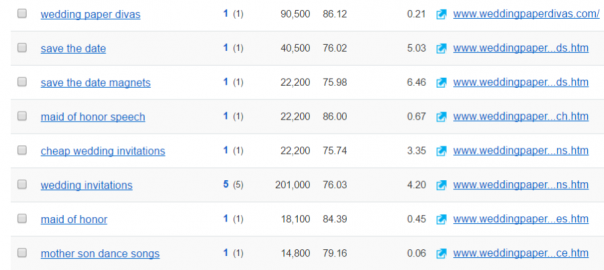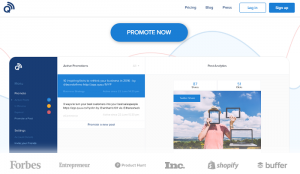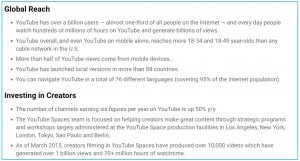Today, SEO tools are much more advanced than they have ever been. The major ones have so many features that it can be daunting to use them and even impossible to know them fully, inside and out.
With that being said, as an SEO professional, I have learned a lot of tactics and tricks when it comes to SEO tools. I use several SEO tools for reporting, intelligence, and tactics to take clients to new levels of organic search engine results. After working with different tools throughout my time in the industry, I’ve learned my way around them. Here are my main hacks that you can use to help you be a more effective internet marketing or SEO professional.
Side note – Within this article, I mostly refer to Ahrefs and SEMRush because I use them the most within my practice. I do not get a commission or have any affiliation with these tools—except I pay them a ton of money every month, like you.
Reverse Engineer Competitors Links
This first hack is very simple. You can use different tools to pull your competitor’s backlinks in order to see which ones are best. I personally like to use Ahrefs for this, but you can also use a tool like Majestic SEO. I am not a huge fan of SEMRush for backlink profiles because I have found them to be relatively small and inaccurate for backlink profile.
After you pull their backlinks, you can go inside the spreadsheets and, by using the Ahrefs score, figure out which ones are the best. Once you figure out which ones are best for your competitors, you can try to replicate them. However, be aware—replicating links is not an easy task. It requires a lot of thought and planning. It should go without saying that you want to replicate the same links with at least a score higher than 15. Here are the main three you should want to replicate:
- High-Quality Blog Comments:
Blog comments are not the devil that other SEO articles make them out to be. If your competitors are being mentioned in blog comments, then you should be there, too. The build rel=nofollow links help to make your link profile more balanced and sound.
- Directories and Resources:
These could be lists of companies, different places to buy products, and more. Work with the main webmaster to get a link to your website in the same place.
- Content Mentions:
If there are links within the content of an article, you can try to get the same type of link through submitting editorial content or trying to get mentioned in the same article.
If you keep rinsing and repeating this method long enough, you will score good, quality backlinks. This will help you get more search traffic and sales.
If you want to learn more about reverse engineering, I wrote a complete guide on using SEMRush to reverse engineer your competitors on the SEMRush blog!
Competitor’s Insights
Another hack that can help you is looking at exactly what your competitors rank for in Google. You can use Ahrefs, but I prefer using SEMRush because their database is huge.

There are a couple of main ways to use this data:
- By looking at their backlink profile and their on-page optimization, you can figure out how their content pages are ranking so high for main keyword phrases.
- You can use this data to categorize and understand what pages to target for what keyword phrases. If they are a retailer and your competitor has a ton of “brand” pages ranking for “brand related keyword phrases,” doesn’t it make sense for you to do the same and link it on your navigational bar?
Those are just two ways that I have used this data in the past, but there are a thousand different ways to use it to your best advantage. You just have to think outside of the box and be clever in using it correctly.
Competitor Content Research
If you are guessing about what content to create, you are at a serious disadvantage when it comes to content marketing. Here’s the thing—you don’t have to guess. By using Ahrefs, you can literally see what works well for your competitors. You are able to see how many social media shares their pages received, what they rank for, and how many backlinks they have.
By looking at this data, you should be able to determine what you should be writing about. If you see that a certain topic has a lot of social shares, ranks for the most keyword phrases, and has the least amount of backlinks—well, then, you should have a topic to write about.

Using the data above, I know what I should create based on how many times it was shared, how much organic traffic it receives, and how many referring domains it has. The more organic search traffic, the more social signals; having the least amount of referring domains is good for creation because it is less competitive than popular topics.
Broken Link Building
Broken link building is an easy hack, although it has been rather overpopulated with players in it. Using your Ahrefs tools, you can look at your competitor’s broken backlinks. Once you have a list of broken backlinks, you want to try to get the same ones. Notify the webmaster of the broken link and suggest that it is replaced with one of your links—because, after all, you found the broken link.

Most likely, you will not able to replace the majority of them, but, usually, you find some hidden gems in there. For less competitive spaces, this tends to work very well. It is a great tactic for companies that sell niche products or markets without a lot of SEO companies in it.
Phrase Match Keyword Research
Doing keyword research can be very difficult, but it is one of my favorite hacks. Here’s what I do: I take the page that I want to optimize and think of the most important keyword phrase. Once I have that main keyword phrase, I plop it into SEMRush’s phrase match and see what other keywords I can optimize for in addition to the main phrase.

By using this data, I can see that a lot of searchers want cheap or free save the dates. If I offer such, then I should optimize for it. However, if I don’t offer it, then I should stay clear of that and optimize for other keywords in these phrases, such as photo cards.
Overall, using this data can be very helpful in identifying what are people searching for and modifying your content to appeal to a larger number of searchers.
Reclaiming Lost Links
This hack is definitely the hardest and the most time-consuming. Using Ahrefs, you can see what links you lost in the past 60 days. Here is where it becomes difficult. There is no template and no knowledge I can transfer on to you about how to get the links back—because every case is different. However, the strategy is to see what you lost and try to get those links back.
Sometimes an article could be deleted because of age or something similar, and you can either try to make another article and place it there or request to get the link back from the website. Generally, you’ll have a lower success rate doing this, but you worked hard for those links. Trying to reclaim them is always worth a try.
Conclusion
Overall, there are thousands of ways to use SEO tools. I primarily use Ahrefs and SEMRush for my daily use, but other tools do the same things. If you have any to add, please comment below and let us know!
Digital & Social Articles on Business 2 Community(123)
Report Post





